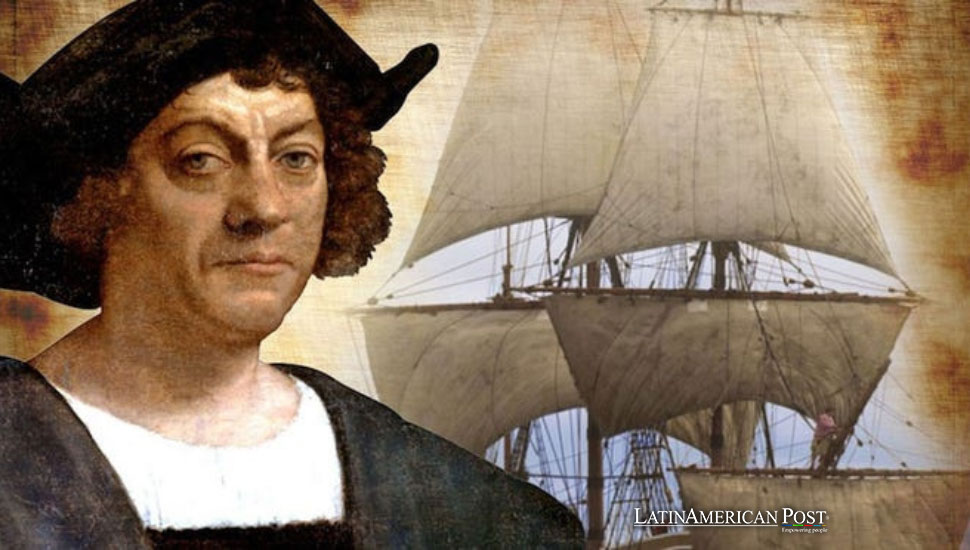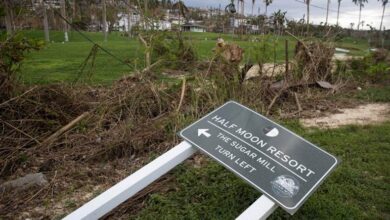Columbus’ Fortunate Voyage: The Narrow Escape from Hurricanes

Christopher Columbus’ first voyage across the Atlantic was marked by extraordinary fortune. Despite crossing the Atlantic during hurricane season, Columbus and his crew faced less than a 2.5% chance of encountering a hurricane—an event that could have changed history.
The Atlantic’s Hidden Dangers
Christopher Columbus’ 1492 journey across the Atlantic was a pivotal historical moment. Still, it could have been a very different story if the explorer and his crew had encountered one of the hurricanes that regularly sweep across the Atlantic during the time of year they sailed. According to a recent article by Spanish meteorologist Benito Fuentes López, Columbus was exceptionally fortunate to avoid these devastating storms on his first voyage to the New World. The analysis reveals that Columbus’ expedition had less than a 2.5% chance of running into a hurricane—an event that would have likely meant disaster for the crew and an entirely different course for history.
The meteorological insight was published in Fuentes López’s article, “La suerte de Colón en su viaje: ¿qué probabilidades tenía de toparse con un huracán?” through the Spanish State Meteorological Agency (AEMET). The detailed study uses data from the National Oceanic and Atmospheric Administration (NOAA) and modern climate models to assess just how close Columbus came to disaster.
The official hurricane season in the North Atlantic runs from June 1st to November 30th, with peak activity typically occurring between August and October—precisely when Columbus embarked on his voyage. Yet historical records show no evidence that Columbus and his crew encountered a hurricane. The crew faced calm, steady winds as they crossed the Atlantic, with only minor weather challenges.
According to Fuentes López, the expedition was fortunate. If they had encountered a hurricane, they would unlikely have survived to tell the tale. The wooden ships of the era were not built to withstand the destructive power of hurricanes, and navigation techniques were primitive, leaving crews at the mercy of the elements. The odds of survival in a significant storm were slim.
Contemporary accounts from the crew describe pleasant weather throughout most of the journey without mentioning hurricanes or severe storms. As the expedition neared the American continent, they even encountered the Azores High, a weather system that causes calm seas and light winds—favorable conditions for exploration but unusual for that time of year.
A Meteorologist’s View on the Voyage
While the calm seas may have seemed like a stroke of luck to Columbus, Fuentes López provides a modern scientific explanation for this weather phenomenon. His analysis, using NOAA’s hurricane data, suggests that the conditions in September and October of 1492 were typical for developing hurricanes in the North Atlantic but that Columbus’ crew did not encounter one.
Fuentes López goes further, calculating the precise probability of Columbus encountering a hurricane. His findings show that of the 576 hurricanes recorded in the North Atlantic during the period covered by the voyage, only 17 were in the right time and place to cross paths with Columbus’ ships. Of these, 10 were Category 1 hurricanes, the lowest on the scale, while the rest ranged to Category 4. However, even with these 17 hurricanes, the likelihood of a direct collision with one was just 1%. As the ships got closer to the Caribbean, that risk rose slightly but remained astonishingly low.
Fuentes López’s research also employed advanced reanalysis techniques, specifically the ModE-RAclim system, to recreate the weather patterns of the time. This tool allowed him to confirm that surface winds, vertical wind shear, and sea temperatures were all within the normal range for hurricane formation. No extreme anomalies were recorded during Columbus’ journey, further explaining why no hurricanes developed in the path of the ships.
Narrow Escapes from Disaster
Columbus’s luck becomes even more apparent when considering the timing of his departure. A damaged rudder on one of the ships, La Pinta, delayed the expedition, forcing them to wait in the Canary Islands. This seemingly unfortunate event may have saved the expedition. According to Fuentes López, had Columbus left on August 15th as originally planned instead of September 6th, the probability of encountering a hurricane would have increased to 5%. While still low, this would have significantly heightened the risk of disaster.
Even more striking, Fuentes López estimates that if the voyage had started at the beginning of the hurricane season, around late May, the probability of crossing paths with a hurricane would have quadrupled to around 10%. These numbers reveal just how close Columbus came to catastrophe.
The meteorologist also highlights the importance of the three months that Columbus and his crew spent exploring the Caribbean islands, including the Bahamas, Cuba, and Hispaniola. While no hurricanes were recorded during this period, Fuentes López emphasizes that had the crew encountered one, they may have survived but likely would not have returned to report their findings. The return voyage was also perilous, but the hurricane season was nearing its end by then, and the likelihood of a storm had dropped to just 1.5%.
In total, Fuentes López calculates that the overall probability of encountering a hurricane during the entire voyage—from departure to exploration and return—was just under 2.5%.
Storms Beyond Hurricanes
While Columbus and his crew were fortunate enough to avoid hurricanes, their return journey was far from smooth sailing. The most significant weather challenges they faced were not hurricanes but other powerful storms that plagued the Atlantic in early 1493. As Fuentes López points out, while hurricanes may have been absent, the ships were not immune to other extreme weather events.
During the first half of December 1492, Columbus’ ships endured many days of heavy rain and unfavorable winds, making navigation difficult. Although these conditions were less dangerous than hurricanes, they still threatened the crew and their vessels considerably. Fuentes López’s reanalysis confirms that February 1493 was particularly stormy, with multiple storms recorded across the Atlantic. These storms, with high winds, low visibility, and enormous waves, were far from the calm and favorable conditions experienced at the start of the voyage.
Ironically, it was not hurricanes but these tempests that posed the greatest danger to Columbus’ crew. Fuentes López describes how these storms created enormous waves that battered the ships and reduced visibility, making navigation treacherous. The advanced ModE-RAclim reanalysis of weather patterns shows that February 1493 was unusually prolific regarding storm activity, creating additional hardships for the returning sailors.
Despite these challenges, Columbus returned to Spain safely, marking the end of his first voyage. After months of exploring new territories, this return was as fortunate as the outbound journey. The failure to encounter hurricanes or deadly storms allowed Columbus to return with news that would shape history.
Also read: Colombia Battles Devastating Fires Amid Latin America’s Worsening Drought
The story of Columbus’ voyage is not just one of exploration and discovery but also incredible fortune. Avoiding hurricanes during such an arduous journey was a stroke of luck that few at the time could have appreciated. Thanks to the insights of meteorologist Benito Fuentes López, we now understand just how narrow Columbus’ escape from disaster indeed was. His success, in many ways, hinged on the whims of the weather—whims that, had they turned against him, could have altered the course of history.





